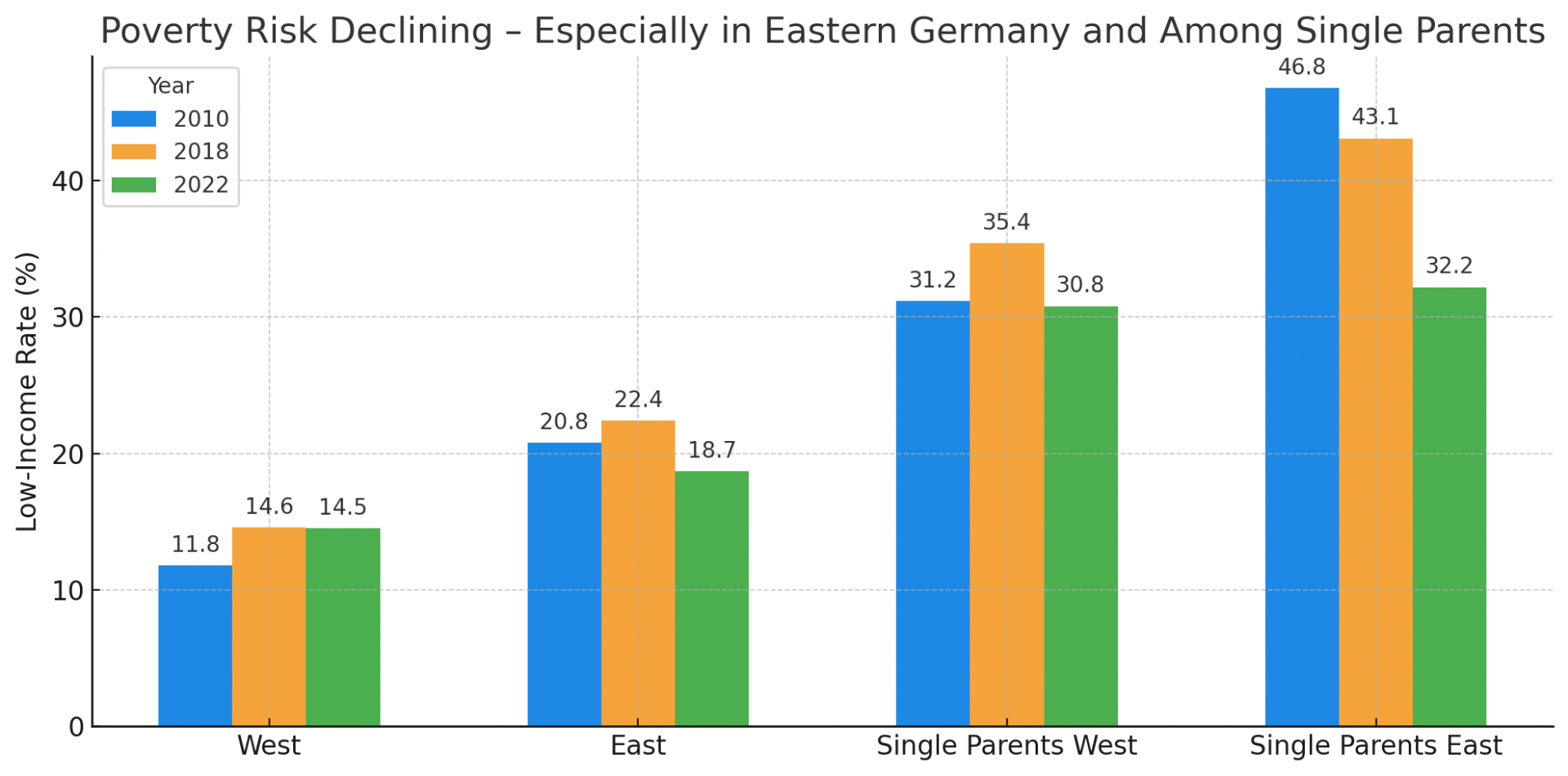Germany’s Low-Wage Sector Shrinks as Poverty Risk Declines, Especially in Eastern States
Germany’s low-wage sector has been shrinking, particularly in eastern Germany, while the at-risk-of-poverty rate is also falling, marking a potential turning point after years of rising inequality. These findings come from the latest income survey conducted by the Socio-Economic Panel (SOEP) at DIW Berlin, which collects data from around 30,000 respondents annually.
Despite real wage losses due to inflation in 2022, the lowest wage group saw relative gains, largely driven by a sharp increase in the minimum wage. As a result, the proportion of low-wage earners nationwide fell from 23.4% to 18.5% among dependent employees, while in eastern Germany, it declined from 38% to 24% since its peak in 2007.
“This is a particularly encouraging trend in eastern Germany. Both the low-wage sector and the at-risk-of-poverty rate have dropped significantly, although they remain above the levels seen in western Germany,” said Markus M. Grabka, author of the SOEP study.
Poverty Risk Declines, Particularly Among Youth and Single Parents
Although overall household income has increased significantly in the long term, rising by 35% since 1995 after adjusting for inflation, the lowest-income households have seen little improvement. In contrast, the wealthiest households have experienced a 58% income increase.
However, recent data suggests a potential shift in poverty trends. For the first time in years, the at-risk-of-poverty rate has begun to decline, particularly in eastern Germany, among children and young people, and within single-parent households.
The poverty rate for single parents has fallen from a peak of 37% in 2018 to 31% in 2022, with an even steeper drop in eastern Germany, where it declined from 43% to 32% over the same period. Government support measures, including expanded maintenance payments and increased tax relief for single parents, appear to have contributed to these improvements.
“The drop in poverty risk is encouraging, but sustained efforts are needed to confirm a lasting trend reversal,” Grabka noted.
Education as a Key to Breaking the Cycle of Poverty
While recent progress is promising, experts warn that targeted investments are needed to further reduce poverty, particularly among children and young people. The rate of early school leavers has increased, heightening concerns about long-term social mobility.
“Without a recognized educational qualification, poverty in adulthood is highly likely,” Grabka cautioned. He recommended greater public investment in education, potentially funded by higher taxes on wealth, to address the structural causes of poverty and provide better opportunities for future generations.
As Germany grapples with economic shifts and inflationary pressures, the latest data offers hope for gradual improvements in income equality and poverty reduction—provided that policymakers continue to prioritize social and economic reforms.
Source: DIW Berlin










